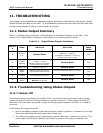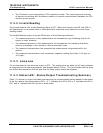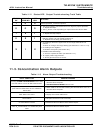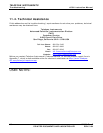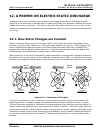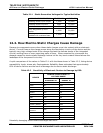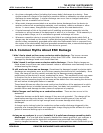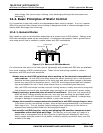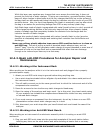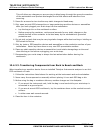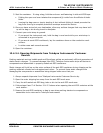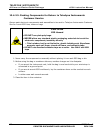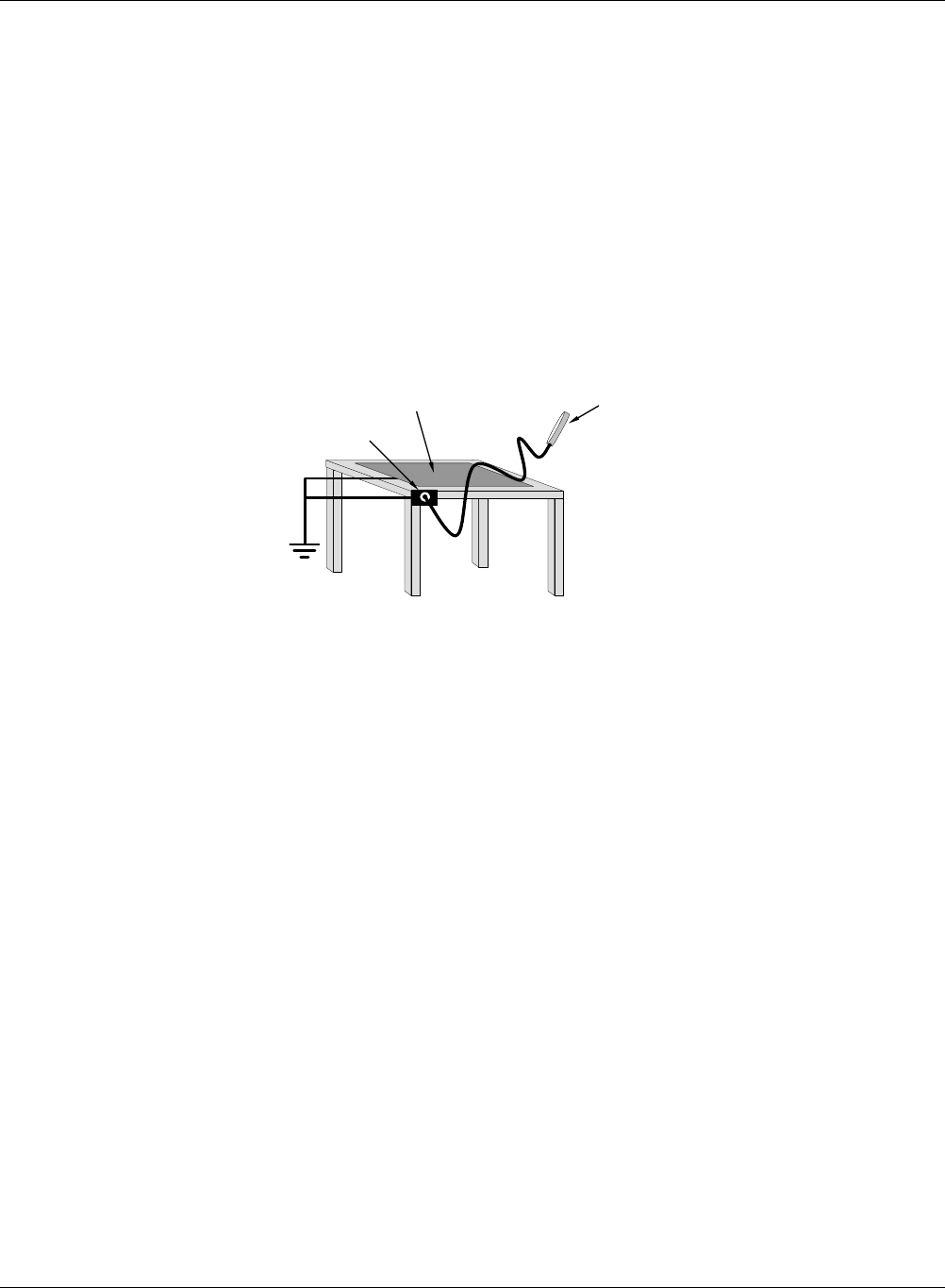
TELEDYNE INSTRUMENTS
A Primer on Electro-Static Discharge 460L Instruction Manual
72 05228 Rev B
PRINTED DOCUMENTS ARE UNCONTROLLED DCN 5164
other things, like you and your clothing, from discharging through the instrument and
damaging it.
12.4. Basic Principles of Static Control
It is impossible to stop the creation of instantaneous static electric charges. It is not, however
difficult to prevent those charges from building to dangerous levels or prevent damage due to
electro-static discharge from occurring.
12.4.1. General Rules
Only handle or work on all electronic assemblies at a properly set up ESD station. Setting up an
ESD safe workstation need not be complicated. A protective mat properly tied to ground and a
wrist strap are all that is needed to create a basic anti-ESD workstation.
Wrist Str
a
Protective Mat
Ground Point
Figure 12-2 Basic anti-ESD Workbench
For technicians that work in the field, special lightweight and portable anti-ESD kits are available
from most suppliers of ESD protection gear. These include everything needed to create a
temporary anti-ESD work area anywhere.
Always wear an Anti-ESD wrist strap when working on the electronic assemblies of
your analyzer. An anti-ESD wrist strap keeps the person wearing it at or near the same
potential as other grounded objects in the work area and allows static charges to dissipate
before they can build to dangerous levels. Anti-ESD wrist straps terminated with alligator
clips are available for use in work areas where there is no available grounded plug.
Also, anti-ESD wrist straps include a current limiting resistor (usually around one meg-ohm)
that protects you should you accidentally short yourself to the instrument’s power supply.
Simply touching a grounded piece of metal is insufficient. While this may temporarily
bleed off static charges present at the time, once you stop touching the grounded metal
new static charges will immediately begin to re-build. In some conditions, a charge large
enough to damage a component can rebuild in just a few seconds.
Always store sensitive components and assemblies in anti-ESD storage bags or bins:
Even when you are not working on them, store all devices and assemblies in a closed anti-
Static bag or bin. This will prevent induced charges from building up on the device or
assembly and nearby static fields from discharging through it.
Use metallic anti-ESD bags for storing and shipping ESD sensitive components and
assemblies rather than pink-poly bags. The famous, pink-poly bags are made of a
plastic that is impregnated with a liquid (similar to liquid laundry detergent) which very
slowly sweats onto the surface of the plastic creating a slightly conductive layer over the
surface of the bag.




